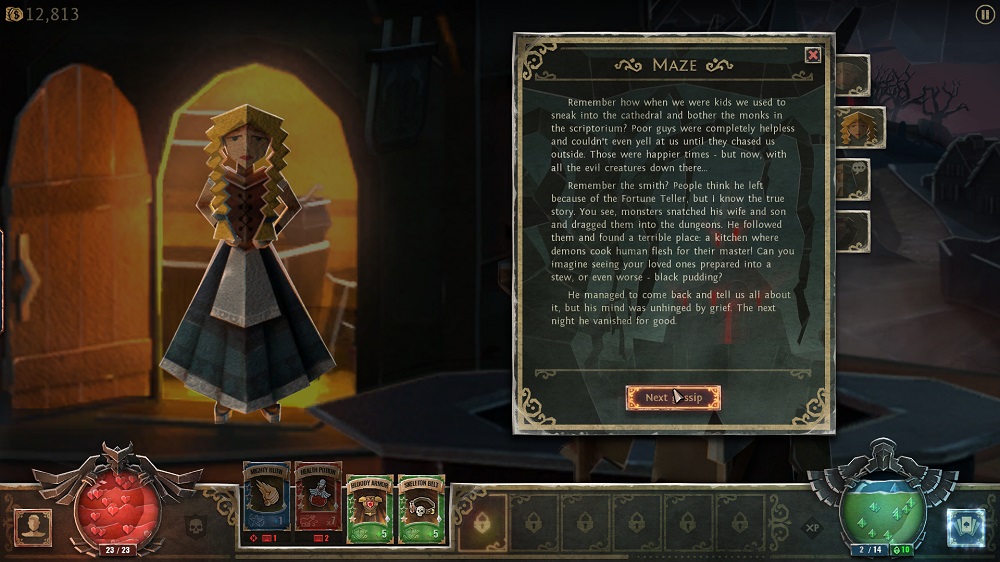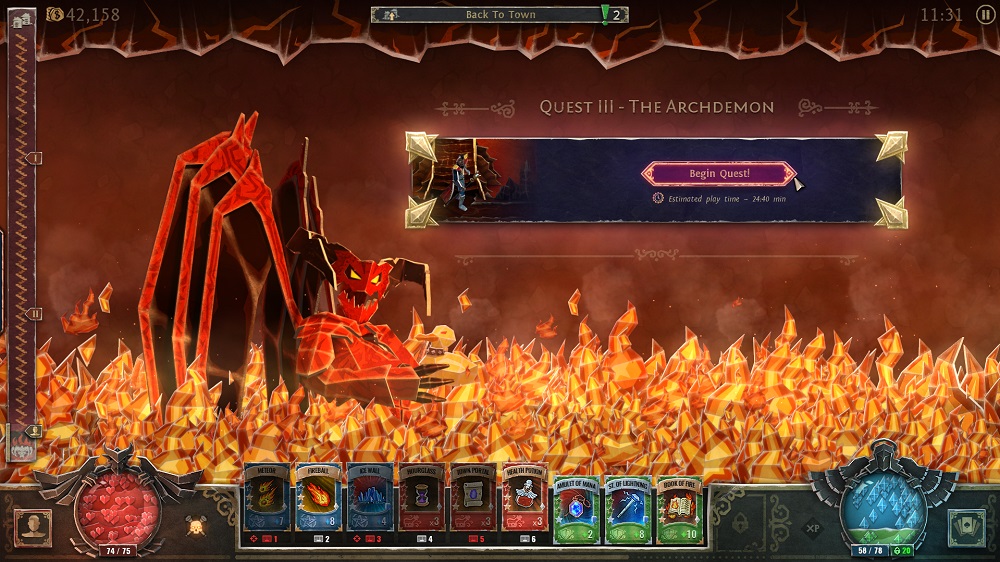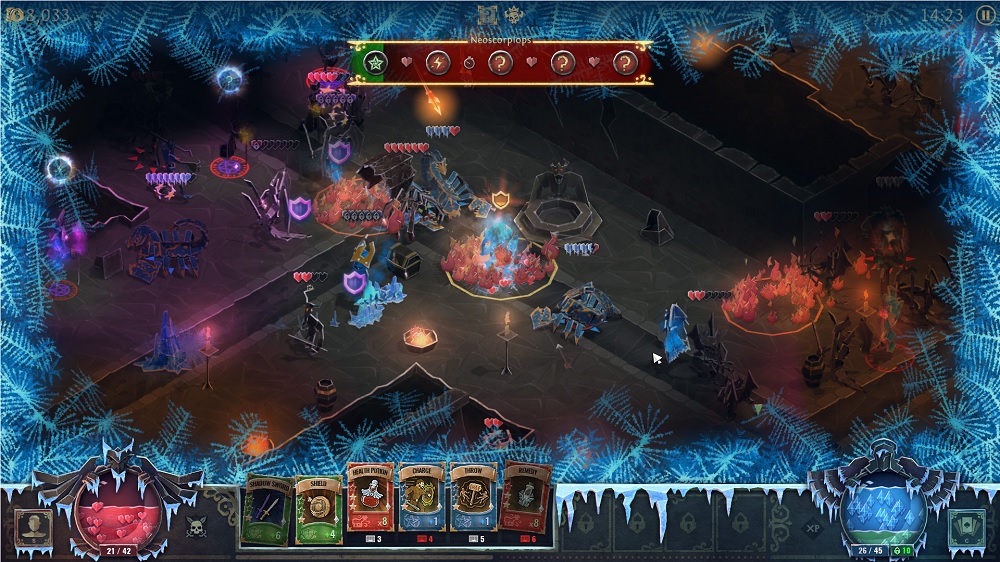- OnePlus Nord gets March 2021 security patch with OxygenOS 11.1.1.2 update
- OnePlus 9 and 9 Pro get their first OxygenOS update
- Slack will soon allow organizations to create a private business network for secure communication
- OnePlus Nord receives yet another OxygenOS update, with July security patch, camera imropvements and more
- Apple Co-founder sues YouTube over Bitcoin scam videos
- New Samsung Galaxy Watch 3 comes with fall detection and an amazing hand gesture
- Microsoft’s LinkedIn sued for iOS clipboard snooping
- Deal Alert: Microsoft’s Surface Laptop 3 is $270 cheaper today
- Samsung Galaxy Z Fold 2 will reportedly not launch on the 5th August
- Netmarketshare: Chrome now officially has more than 70% of the desktop browser market.
آخرین مطالب
امکانات وب
Reviewed on PC
Balancing the tones of cutesy papercraft aesthetics and horrifying demonic imagery can hardly be a simple task. Witnessing innocent humans being boiled alive in a cooking pot in a virtual form of card is a confusing image to process, but it works, and Book of Demons vastly benefits from its striking and cute-but-visceral visuals.
Thing Trunk’s Diablo-lite starts off welcoming enough… in a horrible, messed-up kind of way. After returning to your hometown after many years, you find it destroyed and desecrated by the hands of monsters. A few residents still reside there, namely your childhood friend and an old sage. As you play, more NPCs join this central hub allowing you to create a small community of friends – all of whom gossip with you on a regular basis.

There isn’t too much lore to stomach like in Blizzard’s jargon-fests but there is a lot of meaningful content. You may not care too much about any of the characters here outside of their mechanical purposes, such as the healer’s purpose of getting you back in demon-slaying shape, but you will at least learn about them. They aren’t amazing characters, but they do feel like characters instead of simply being catalysts for your survival.
They quickly introduce you to the game’s major playfield – a large tower full of various horrifying monsters divided into numerous floors. You’re shown the huge amount of depth to the tower – there’s a staggering amount of content to see here—and a sneak peek at the final boss. That’s your goal, a huge Archdemon writhing in fire. He’s naughty and he knows it. He’s evil and he loves it. And he has a BDSM duck.

As you enter the tower, Book of Demons’ world unfolds around you, springing to life just like a pop-up book. It never gets old. As you click around the environment, you can attack enemies, break pots, open tombs and chests, and run away from everything before you die a gruesome death at the hands of papercraft zombies. Hovering your mouse around the map allows you to pick up hearts and gold, although some rarer items do need to be clicked before they’re picked up.
In essence, most of the core gameplay here is just clicking on things, but in the most satisfying way possible. Every click rewards you with satisfying visual and audio feedback. Whether it’s the hearts indicating your enemies’ health bursting as you attack them, or the satisfying clunk of sword-on-shield combat, you’ll always know when damage is being done.
You will have to click in different ways – as stupid as that may sound. Some enemies get angry if you simply spam attacks at them. Instead, you’ll have to pace your attacks – one-two-thee-stop, one-two-three-stop. Other enemies, such as bosses and mini-bosses, have large rings around them in between phases. When these rings are active, you’ll have to stay close before you can whittle away at their next chunk of health. Of course, there are monsters that attack you from afar, poison enemies that explode in a large radius and 70+ other beasties. It’s not about simply clicking, it’s about clicking cleverly.

While exploring, you’ll frequently come across cards which you can equip to a toolbar at the bottom of the screen. Different cards grant different benefits: should you equip a health potion, a long-range attack or an area of effect knockback? Throughout my time with the game, I never thought a singular build was the right or wrong answer – as long as you know how to use the deck you’ve put together. Experimentation isn’t really key as you could get through most of the game with a fairly inadequate deck, but it’s nice to swap in and out of different deck configurations just to see how powerful you can make yourself.
Back in the village, cards can be upgraded and fused to give you more powerful versions. There are rarer versions of each card which use more mana but provide better results. Investing in certain cards may prove dangerous as Book of Demons’ rogue-like elements can rear their chancy head. If you die in a dungeon, you drop your equipped deck. You can fight to get your deck back from the clutches of your creepy creature foes or you can abandon them and build a new deck from scratch. I’m too sentimental for the latter.
Unlike a lot of games, Book of Demons more than respects your time. In fact, play sessions actively design themselves around your playtime. When entering a floor, you can choose what type of game you want to delve into. If you like to play small games, Book of Demons’ options for you will be smaller than that of someone who prefers to play longer games. It’s a refreshing experience and one that would be perfect for ports on portable systems. (*cough* Nintendo Switch *cough*)
The more you explore the deeper levels, the more disgusting, disfigured and thoroughly engaging the environments become. It’s easy to get sucked into the demonic depths the more you play through them. It really is the definition of play how you want – the more you want to play, the more it’ll give you and with three classes to choose from there’s a lot to play through.
Book of Demons is a beautiful papercraft Diablo-like that’s perfect for casual play. With a system that designs itself around the way you play, fans of isometric looters and click-based hack-and-slash should certainly look this up. It’s a thoroughly enjoyable dungeon crawler, one that I’m sure I’ll still be exploring well into the future.
microsoft news...برچسب : نویسنده : محمد رضا جوادیان microsoftnews بازدید : 340
آرشیو مطالب
- بهمن 1394
- اسفند 1394
- دی 1395
- بهمن 1395
- اسفند 1395
- فروردين 1395
- ارديبهشت 1395
- خرداد 1395
- تير 1395
- مرداد 1395
- شهريور 1395
- مهر 1395
- آبان 1395
- دی 1396
- بهمن 1396
- اسفند 1396
- فروردين 1396
- ارديبهشت 1396
- خرداد 1396
- تير 1396
- مرداد 1396
- شهريور 1396
- مهر 1396
- آبان 1396
- آذر 1396
- دی 1397
- فروردين 1397
- ارديبهشت 1397
- خرداد 1397
- تير 1397
- مرداد 1397
- شهريور 1397
- آذر 1397
- دی 1398
- بهمن 1398
- اسفند 1398
- ارديبهشت 1398
- خرداد 1398
- مرداد 1398
- آبان 1398
- آذر 1398
- فروردين 1399
- تير 1399
- مرداد 1399
- فروردين 1400
